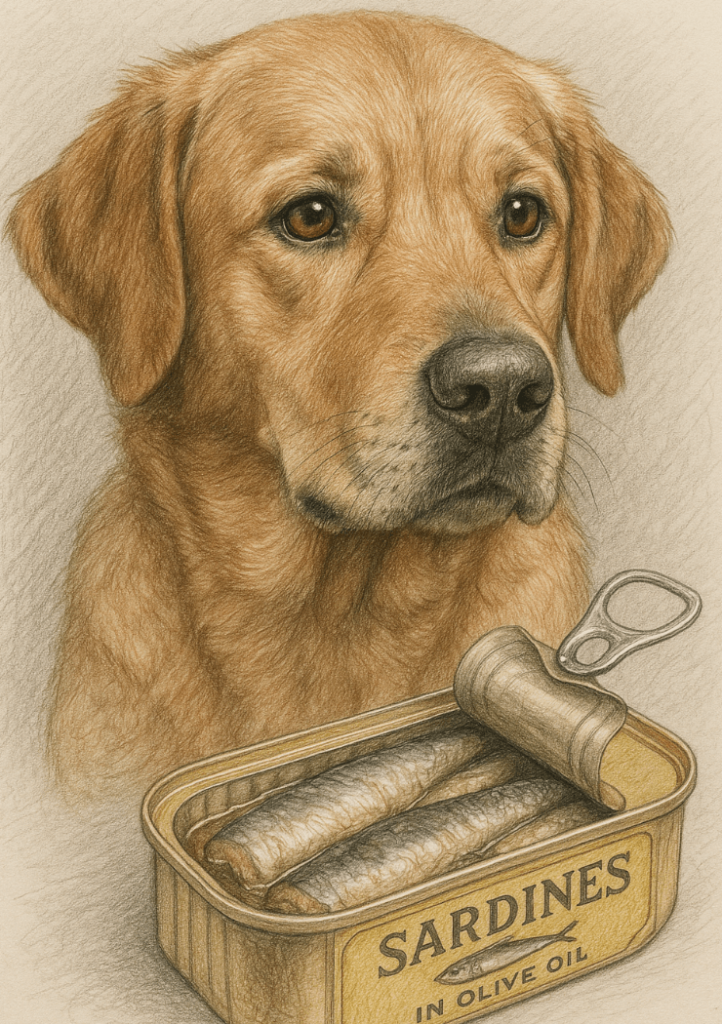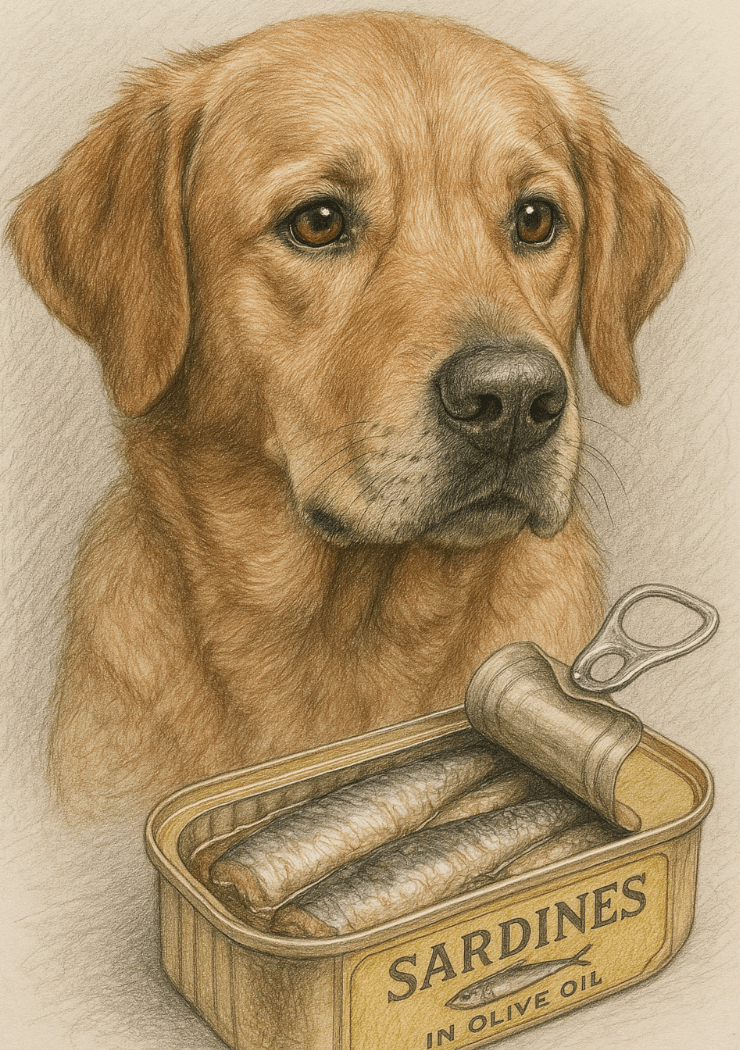Can Dogs Eat Sardines in Olive Oil?
Sardines are a nutrient-rich food often praised for their health benefits, but can they be shared with our furry friends? Many dog owners wonder whether sardines in olive oil are safe or even beneficial for their canine companions. The good news is that sardines can be a healthy addition to your dog’s diet when prepared and served correctly. Packed with omega-3 fatty acids, protein, and essential vitamins, these tiny fish offer numerous advantages for your pup’s overall well-being.
However, there are important considerations to keep in mind to ensure your dog enjoys the benefits without any risks. In this blog post, we’ll explore everything you need to know about feeding sardines in olive oil to dogs, including potential benefits, precautions, and expert tips for safe consumption.
Benefits of Feeding Sardines in Olive Oil to Dogs
Sardines in olive oil can provide a range of health benefits for dogs, making them an excellent occasional treat or dietary supplement. Here’s how they contribute to your dog’s well-being.
Rich in Omega-3 Fatty Acids:
Omega-3s support skin and coat health, reduce inflammation, and promote joint mobility, especially in older dogs.High-Quality Protein Source:
Sardines are packed with lean protein, which supports muscle development and overall energy levels.Boosts Brain Health:
The omega-3 fatty acids in sardines also benefit cognitive function, helping to keep your dog mentally sharp.Supports Heart Health:
The combination of omega-3s and antioxidants in sardines promotes cardiovascular health and reduces the risk of heart disease.Natural Source of Vitamins and Minerals:
Sardines contain vitamin D, calcium, and phosphorus, which are essential for bone strength and immune system function.
When fed in moderation, sardines can be a nutritious addition to your dog’s diet, enhancing their overall health and vitality.
Potential Risks of Feeding Sardines in Olive Oil to Dogs
While sardines offer many benefits, it’s important to be aware of potential risks to ensure your dog’s safety. Understanding these concerns helps you make informed decisions about incorporating sardines into their diet.
High Caloric Content from Olive Oil:
Excessive olive oil can lead to weight gain, especially in smaller or less active dogs. Portion control is key.Salt Levels in Some Brands:
Some canned sardines may contain added salt, which can be harmful to dogs if consumed in large amounts.Risk of Allergic Reactions:
Although rare, some dogs may have allergies or sensitivities to fish. Introduce sardines gradually to monitor for adverse reactions.Choking Hazard from Bones:
While sardine bones are soft and generally safe, larger pieces could pose a choking risk for small breeds.Overfeeding Can Cause Digestive Upset:
Too many sardines at once may lead to diarrhea or stomach discomfort due to their rich fat content.
By being mindful of these risks, you can safely incorporate sardines into your dog’s diet without compromising their health.
Check this guide 👉Can Dogs Eat Curry? Best 7 Expert Tips!
Check this guide 👉Can Dogs Eat Cactus? Best 7 Expert Tips!
Check this guide 👉Can Dogs Have Barbecue Sauce? Best 7 Expert Tips!

Safe Ways to Serve Sardines | Risks to Avoid When Feeding Sardines |
|---|---|
Plain sardines in water (no added salt) | Sardines with high sodium content |
Sardines packed in minimal olive oil | Overfeeding leading to obesity |
Boneless or finely mashed sardines | Large pieces of bones posing choking hazards |
Mixed with regular dog food as a supplement | Feeding spoiled or expired canned sardines |
Small portions as an occasional treat | Ignoring signs of allergic reactions |
How to Safely Feed Sardines to Your Dog
Feeding sardines to your dog requires careful preparation and portion control to maximize benefits while minimizing risks. Follow these guidelines for a safe and enjoyable experience.
Choose Plain Sardines:
Opt for sardines packed in water or minimal olive oil, avoiding those with added salt or spices.Check for Bones:
Ensure the bones are soft and fully cooked, or remove them entirely if your dog is particularly small or sensitive.Start with Small Portions:
Begin with a teaspoon or two to gauge your dog’s tolerance and avoid digestive upset.Limit Frequency:
Treat sardines as an occasional snack rather than a daily meal replacement to prevent overconsumption.Consult Your Veterinarian:
Always seek professional advice before introducing new foods, especially if your dog has underlying health conditions.
These steps ensure that your dog enjoys the nutritional benefits of sardines without any adverse effects.
Signs Your Dog May Not Tolerate Sardines
Even though sardines are generally safe, some dogs may not tolerate them well. Watch for these signs to determine if sardines agree with your pup.
Vomiting or Diarrhea:
Gastrointestinal distress is a common sign of intolerance or overfeeding.Excessive Itching or Skin Irritation:
Allergic reactions may manifest as itching, redness, or rashes on the skin.Lethargy or Loss of Appetite:
A sudden lack of energy or refusal to eat could indicate an adverse reaction.Swelling or Difficulty Breathing:
Severe allergic reactions are rare but require immediate veterinary attention.Unusual Behavior Changes:
Restlessness, pacing, or other unusual behaviors may signal discomfort.
Recognizing these symptoms early allows you to adjust your dog’s diet and seek veterinary care if necessary.
Alternative Sources of Omega-3s for Dogs
If your dog doesn’t enjoy sardines or you’re looking for other ways to boost their omega-3 intake, consider these alternatives.
Salmon Oil Supplements:
A convenient and concentrated source of omega-3s, available in liquid or capsule form.Cooked Salmon or Mackerel:
These fish are also rich in omega-3s but should be deboned and free of seasoning before serving.Flaxseed Oil or Ground Flaxseeds:
A plant-based option suitable for dogs who don’t tolerate fish well.Krill Oil Supplements:
Another marine-based source of omega-3s, often easier to digest than fish oil.Leafy Greens Like Spinach:
While not as potent as fish, greens provide trace amounts of omega-3s along with other nutrients.
Exploring these options ensures your dog gets the essential fatty acids they need for optimal health.
Tips for Transitioning New Foods Into Your Dog’s Diet
Introducing new foods, such as sardines, requires a gradual approach to avoid upsetting your dog’s digestive system. Here are some helpful tips for a smooth transition.
Start with Tiny Amounts:
Mix a small portion of sardines with your dog’s regular food to allow them to adjust to the new flavor and texture.Monitor for Reactions:
Observe your dog closely for any signs of intolerance, such as vomiting, diarrhea, or excessive gas.Maintain Balance:
Ensure that new additions don’t disrupt the overall nutritional balance of your dog’s diet.Stick to Consistent Timing:
Introduce new foods during regular mealtimes rather than as random snacks to establish routine.Be Patient:
Some dogs take time to warm up to unfamiliar tastes; persistence and consistency are key.
A thoughtful transition minimizes stress and maximizes acceptance of new foods.
Understanding the Role of Olive Oil in Your Dog’s Diet
Olive oil is often praised for its human health benefits, but what role does it play in your dog’s diet? Here’s what you need to know.
Healthy Fat Source:
Olive oil provides monounsaturated fats, which support skin health and reduce inflammation.Aids Digestion:
Small amounts of olive oil can help lubricate the digestive tract, easing constipation in dogs.Improves Coat Shine:
The fatty acids in olive oil contribute to a glossy, healthy coat.Should Be Used Sparingly:
High-calorie content means olive oil should be given in moderation to avoid weight gain.Not Essential for Dogs:
While beneficial, olive oil isn’t a dietary necessity and can be substituted with other healthy fats.
Understanding its role helps you decide whether olive oil is a worthwhile addition to your dog’s meals.
Frequently Asked Questions About Feeding Sardines to Dogs
Can I feed my dog sardines every day?
No, sardines should be an occasional treat rather than a daily staple to avoid excessive calories and fat intake.
Are sardines better than salmon for dogs?
Both are excellent sources of omega-3s, but sardines are smaller, less expensive, and often lower in contaminants like mercury.
What if my dog doesn’t like sardines?
Some dogs may dislike the taste; try mixing them with their regular food or offering alternative omega-3 supplements.
Can puppies eat sardines?
Yes, but in very small amounts and only after consulting your vet to ensure it’s appropriate for their developmental stage.
Do I need to cook sardines before feeding them?
Canned sardines are already cooked, but fresh sardines should be thoroughly cooked to eliminate parasites and bacteria.
Making Sardines a Safe and Healthy Treat for Your Dog
Sardines in olive oil can be a nutritious and delicious addition to your dog’s diet when served responsibly. Their omega-3 fatty acids, protein, and vitamins offer numerous health benefits, from improved skin and coat condition to enhanced brain and heart health. However, it’s crucial to be mindful of portion sizes, ingredient quality, and your dog’s individual needs to avoid potential risks. By following expert guidelines and consulting your veterinarian, you can safely incorporate sardines into your dog’s meals or treats, ensuring they enjoy the benefits without any drawbacks. Remember, a little planning goes a long way in keeping your furry friend happy and healthy!
Cat Fever Treatment: Best 7 Expert Tips! Discover expert advice on identifying, managing, and treating fever in cats to ensure their quick recovery and well-being.
Understanding Meloxicam for Cats: Best 7 Expert Tips! Learn how to safely administer meloxicam, manage side effects, and ensure your cat's comfort with expert advice on feline pain relief.
Amoxicillin for Cat UTI: Best 7 Expert Tips! Discover safe usage, dosage guidelines, and expert advice on treating feline urinary tract infections effectively with amoxicillin.
Understanding Cat Cancer Treatment: Best 7 Expert Tips! Discover expert advice on managing feline cancer, from early detection to treatment options, ensuring your cat’s health and comfort.





